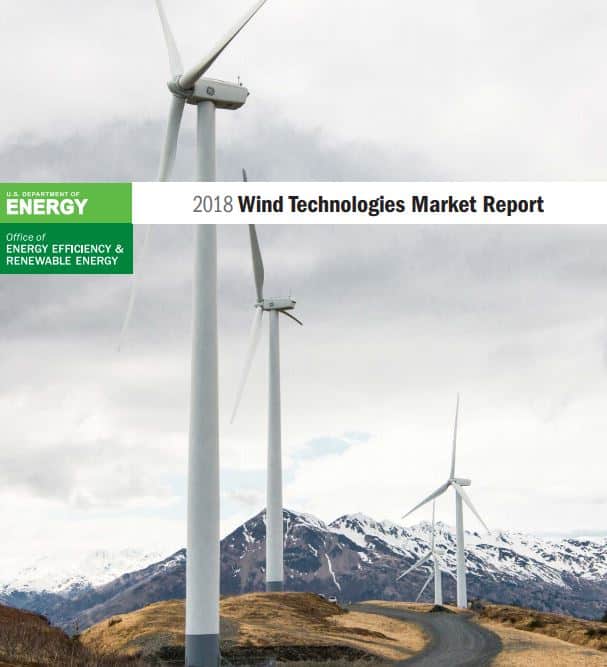U.S. Wind Market Ranks Second Only to China as Subsidies Drive Growth: DOE

The expansion of the wind industry in the U.S. trailed only China in 2018, as soon-to-expire federal subsidies and state incentives helped propel turbine installations higher for a second straight year, a federal report showed.
The nation added nearly 7,600 megawatts of wind power generating capacity in 2018, about 8 percent more than the previous year, driven by the federal production tax credits and state renewable incentives, according to the U.S. Energy Department’s “2018 Wind Technologies Market Report,” issued Aug. 23. The U.S. still trailed perennial power China, which added over twice as much capacity at 21,855 megawatts.
The U.S. wind market, accounting for about 16 percent of total global capacity additions, has seen its appeal grow as developers rush to take advantage of the federal production tax credit before it expires at the end of 2019. State mandates for the procurement of renewable energy to mitigate climate change also play a part, the report found. Twenty-nine states and Washington, D.C. have binding targets for the procurement of power from renewable sources.
The nation’s wind industry attracted investments worth $11 billion last year, and about one-fifth of all new projects were wind power, making the sector the third-fastest growing, behind only solar and natural gas. Most of the new turbines were installed in Texas, which saw 2,359 megawatts of new capacity installed, topping Iowa, Colorado, Oklahoma, Nebraska, Kansas, and Illinois, the report found.
EnerKnol Pulses like this one are powered by the EnerKnol Platform—the first comprehensive database for real-time energy policy tracking. Sign up for a free trial below for access to key regulatory data and deep industry insights across the energy spectrum.
ACCESS FREE TRIAL